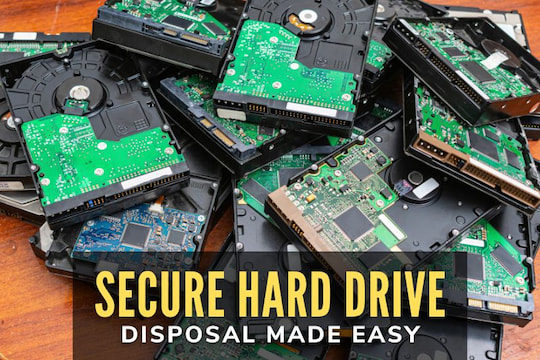Modern workplaces frequently upgrade electronic devices, producing a steady stream of e-waste. Without proper management, e-waste can cause environmental harm, data breaches, and legal issues. Training staff on electronic waste disposal procedures is essential for any business or government office. IT managers in Los Angeles and Orange County play a crucial role in ensuring teams handle outdated devices safely and responsibly.
How to Train Your Staff on Electronic Waste Disposal Procedures

1. Start With Awareness
Effective training begins with awareness. Many employees may not realize that electronics contain hazardous substances such as lead, mercury, and cadmium. Improper disposal allows these toxins to pollute soil and water, posing a threat to health and the environment.
Begin with a brief orientation on the importance of proper e-waste disposal and the risks associated with negligence. Share real-world examples or short videos on the consequences of landfilling electronics. When employees understand why disposal matters, compliance improves.
2. Develop a Clear and Accessible E-Waste Policy
After raising awareness, supply a written e-waste policy that clearly outlines:
- What qualifies as e-waste (e.g., computers, cell phones, printers, cables, and batteries)
- The step-by-step procedure for discarding these items
- Designated collection bins or rooms within the workplace
- Contact information for the IT or facilities personnel in charge
Make the policy visible and simple. Post it on the intranet or in common areas. Larger organizations can nominate “e-waste champions” to monitor compliance and answer questions.

3. Provide Hands-On and Scenario-Based Training
Policies work best with hands-on instruction. Hold workshops that simulate real disposal scenarios. Show how to tag, deposit, and prepare devices with sensitive information.
For IT staff, provide practical sessions on wiping or degaussing hard drives before disposal. Interactive demonstrations reinforce procedures and reduce errors. Emphasize repetition and real-world examples—they have the most impact.
4. Partner With a Certified E-Waste Recycler
Even the strongest processes require a trusted recycling partner. Select a certified e-waste recycler that meets standards such as R2 or e-Stewards. These certifications confirm your recycler uses safe, ethical practices.
Businesses in Los Angeles and Orange County benefit from local recyclers who provide pickup, data destruction certificates, and sustainability reports. Partnering with experts ensures compliance and gives IT managers peace of mind.
5. Integrate Data Security Into Disposal Training
For IT managers, protecting company data is just as important as recycling responsibly. Include data-destruction steps in your staff training program. This can include hard-drive shredding, magnetic degaussing, or secure wiping software.
When training staff on electronic waste disposal procedures, emphasize that no device—no matter how small—should leave the facility without proper data sanitization.

6. Reinforce, Recognize, and Refresh
E-waste education is ongoing. Refresh staff knowledge annually or when new technology is introduced. Use digital reminders, posters, or newsletters to reinforce disposal methods throughout the year.
Recognize departments that consistently comply or take initiative in minimizing waste. Positive recognition fosters a culture that values responsibility and efficiency.
Building a Culture of Responsible Disposal
Responsible e-waste management begins with awareness and ends with consistent action. By training staff on electronic waste disposal procedures, organizations create a sustainable system that protects the environment, secures sensitive data, and maintains regulatory compliance. Each employee contributes to a cleaner and safer community—one device at a time.
For detailed guidance on responsible recycling and device management, visit our page on electronic devices disposal for best practices and step-by-step instructions on safely and sustainably handling outdated electronics. Take action now to ensure your organization meets its environmental, data security, and compliance goals.



















